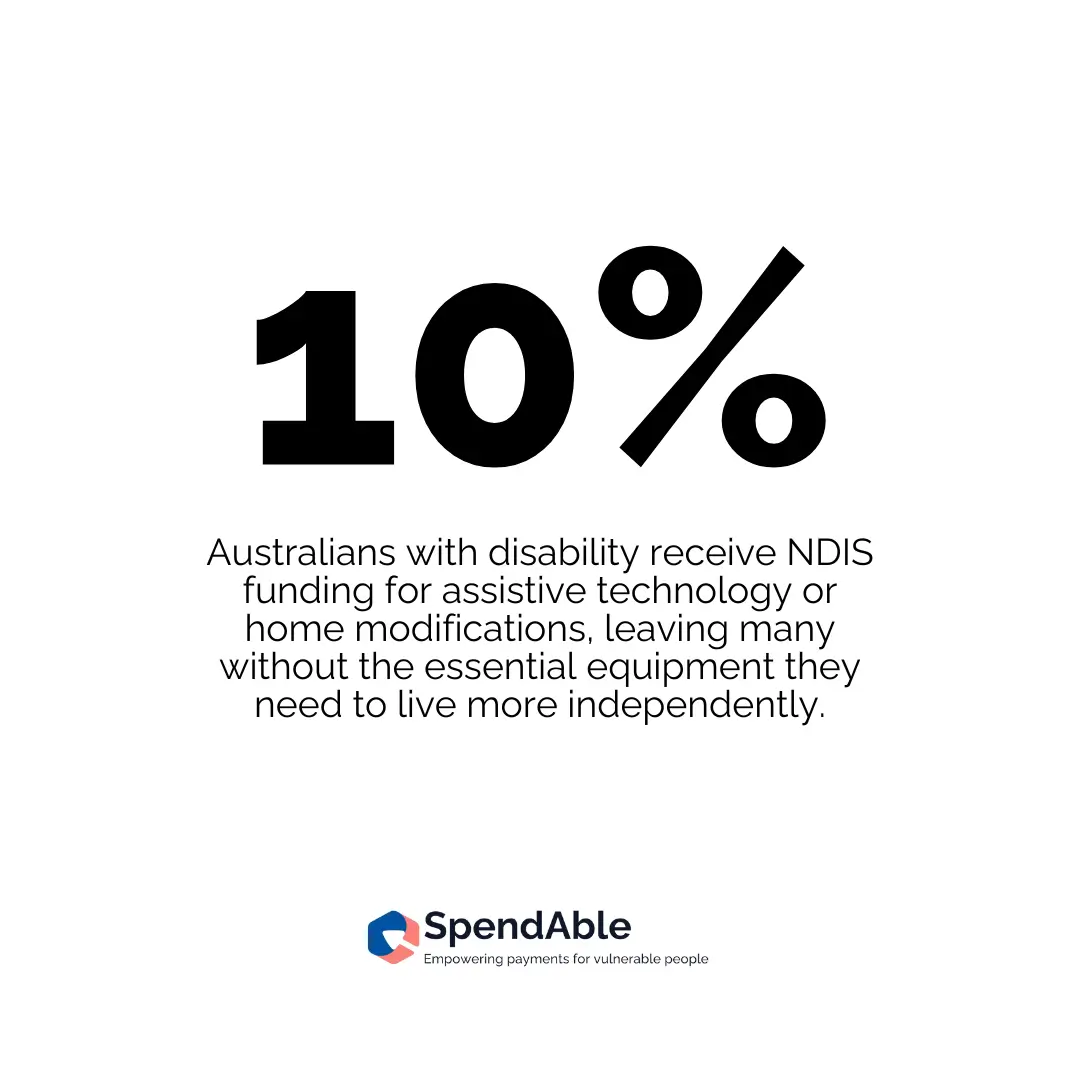NDIS Budget Categories 7 Simple Tips to Understand and Use Your Funds the Right Way

Key Takeaways
- NDIS budget categories split your plan money into three parts: Core for daily needs, Capacity Building for skills and therapy, and Capital for big-ticket equipment or home changes.
- Spending smart means tracking costs, checking flexibility between categories, and planning ahead so funds last all year.
- Talking with your providers and using simple tools like apps or spreadsheets helps you get more value from every NDIS dollar.
If you’ve ever opened your National Disability Insurance Scheme (NDIS) plan and felt lost staring at the words Core, Capacity Building, and Capital Supports, you’re not alone.
Even experienced providers and long-time participants can find the breakdown confusing.
On paper, it looks simple. In practice, it can be the difference between having the right supports in place and feeling stretched halfway through your plan.
While the NDIS was designed to make disability funding more transparent, one independent NDIS Review found that many participants still struggle with delays, underutilised plans, and complex reporting requirements.
Let’s walk through what these categories actually mean, and how understanding them can help both participants and providers make smarter decisions with their funding.
Core supports: your everyday essentials
Core Supports make up the bulk of most NDIS budgets.
They cover what helps you with daily living, community participation, and ongoing support.
You can think of this as the “day-to-day” category. The funding that keeps things moving.
It’s flexible and often adjusted as needs change over time.
Core Supports are divided into four areas:
- Assistance with daily life: things like help with cooking, cleaning, personal care, and other daily activities.
- Transport: travel to appointments, programs, and community activities.
- Consumables: everyday items such as continence products or low-cost equipment.
- Assistance with social and community participation: support to get involved in community programs, sports, or hobbies.
For many participants, this category is the backbone of their plan. It makes sure support workers are paid, transport is covered, and day-to-day life runs smoothly.
Where people often get stuck is on flexibility.
While Core is the most adaptable budget category, there are still limits.
For example, you might be able to move funds from community participation to personal care, but you can’t transfer them to Capacity Building or Capital items.
Providers managing client funds see this every day… one participant might underspend because they’re cautious, while another might run short early because they didn’t track spending closely enough.
And while spending patterns vary person to person, research from the Medical Journal of Australia found that women, older applicants, and people in lower-income areas are less likely to be approved for NDIS support.
Among those approved, funding use was more even, but the study shows that access to Core Supports isn’t always equal from the start.
A clear and updated record of Core spending can prevent both problems. That’s why many care teams now use digital tools to log transactions automatically. It cuts down on manual data entry and helps both the provider and participant see what’s being used in real time.
Capacity building: investing in skills and independence
If Core Supports are about the present, Capacity Building is about the future.
This funding helps participants develop new skills and work toward greater independence. It includes areas like:
- Improved daily living: therapy, training, and assessments from allied health professionals.
- Improved relationships: social skills or behavioural support.
- Finding and keeping a job: employment-related support or training.
- Improved learning: education and training courses.
- Improved health and wellbeing: programs that build physical and mental health capacity.
Unlike Core Supports, Capacity Building funds are not flexible. Each subcategory has its own purpose and budget, and spending outside of those lines can lead to claims being rejected.
That structure can make planning feel rigid, especially if your needs shift throughout the year. But it’s also what ensures funds go toward long-term development.
For providers, this category often creates the most admin.
Each invoice, session, and receipt must clearly match its approved funding area. When records are scattered across emails or paper files, errors are easy to make and hard to fix later.
When these transactions are tracked as they happen, though, it’s easier to stay compliant and measure outcomes.
Some providers use applications to centralise receipts and categories in one place, allowing them to report back to families and coordinators quickly without having to dig through spreadsheets.
That transparency builds trust, and it means participants can see their progress reflected not only in therapy sessions but also in how they manage their funding.
Capital supports: funding for equipment and big-ticket items
Capital Supports are different from the other two categories. They’re designed for one-off or long-term purchases that improve access, mobility, and independence.
This might include:
- Assistive technology, like communication devices or mobility aids.
- Home modifications, such as ramps, bathroom changes, or accessible kitchens.
- Vehicle modifications to support transport needs.
Capital funding is the least flexible category. Every purchase must be planned, quoted, and approved before funds are released.
Because of that, it’s the area where communication between participants, providers, and planners is most important.
Delays in quotes, unclear invoices, or missing documentation can push back essential equipment by weeks or even months.
Research supports this, too. A 2025 study of Australians with skeletal dysplasias found that many participants faced long waits or mismatched funding for essential assistive technology.
The Assistive Technology Equity Studies Report also revealed that the NDIS funds assistive technology and home modifications for only around 10% of Australians with disability, leaving many unable to access equipment that would improve independence.

And as ABC News reported, some participants wait 12 months or more for crucial equipment like wheelchairs, and by the time it arrives, it’s sometimes outdated
When financial tracking systems automatically log and store each document in one place, the process moves faster.
Providers can show evidence of every transaction, and participants can see what’s pending or approved at a glance.
How the categories connect
Even though these budgets are separated on paper, they’re deeply connected in practice.
Take this example:
- A participant receives a wheelchair (Capital).
- That wheelchair makes it easier to travel and join community activities (Core).
- With more independence, they begin a social skills program to build confidence (Capacity Building).
Each category influences the other, creating a full picture of a person’s support and growth.
When spending is recorded clearly across all three, it becomes easier to see how those outcomes fit together and easier to plan for what’s next.
Common challenges and how to handle them
1. Misunderstanding what fits where
It’s easy to assume something like a cooking class should come under Core, but if it’s designed to build life skills, it belongs in Capacity Building. Small errors like that can slow reimbursements or cause disputes later.
2. Lack of visibility
Without real-time data, it’s hard for providers or families to know how much funding remains in each category. That’s why systems that provide a clear spending overview, rather than scattered reports, are valuable.
3. Admin overload
Every transaction, receipt, and claim needs to be stored properly. When that process is manual, it takes time away from care. Automated reconciliation tools can reduce that time drastically and lower the risk of human error.
This is a known system-wide issue. A 2024 review published in The Australian Journal of Social Issues found that administrative complexity and documentation demands continue to be one of the biggest challenges facing both participants and providers under the NDIS.
4. Plan reviews without clear data
When a plan is due for reassessment, the NDIA wants to see evidence of how funding was used. If records are incomplete, it can be difficult to justify an increase or adjustment. Having clear, up-to-date spending records makes that process much smoother.
Why understanding your categories changes everything
When participants understand their categories, they can make confident choices instead of second-guessing every payment.
When providers track spending clearly, they reduce the admin burden and stay compliant without stress.
The NDIS was built to give people control over their supports, but control only works when information is clear.
Knowing the purpose behind each category helps everyone involved plan ahead, avoid surprises, and focus on what matters most: building independence and improving quality of life.
The takeaway
NDIS funding goes beyond numbers and line items. It focuses on aligning support with real goals and needs.
Understanding how Core, Capacity Building, and Capital Supports work, and how they interact, helps you use your plan to its full potential.
And when spending, receipts, and approvals are tracked transparently, it creates a smoother experience for everyone, from the person receiving support to the provider managing the funds.
Because when money management becomes simpler, care becomes stronger.




.jpg)